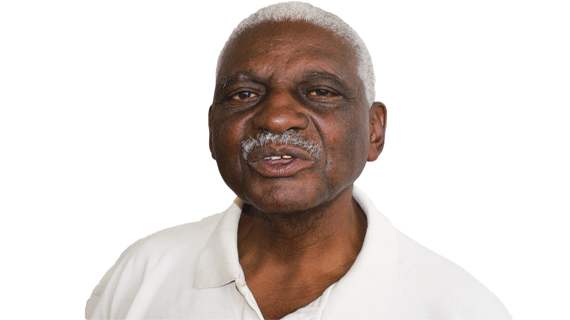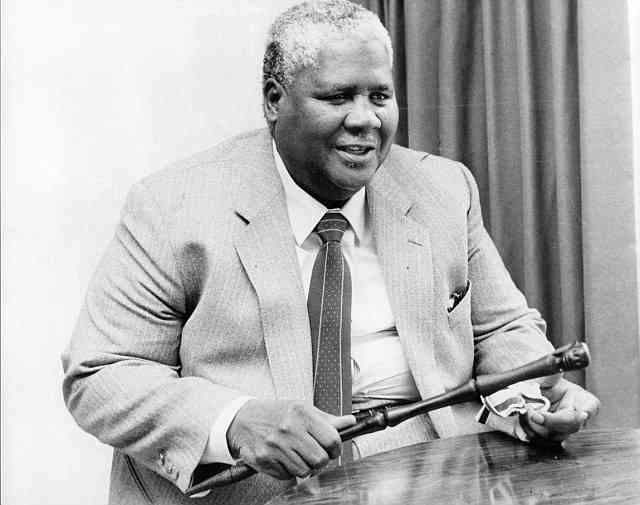
THE Ndebele, like most people, did not eat their food raw. They prepared it in a certain way and cooked it before they ate it.
For example their meat was cut into pieces or big chunks, depending on the occasion and then they cooked or roasted it. The exception was the fruit of the wild as well as honey which they ate from the hive. Cooking and roasting were by far the most common.
Meat was a major favourite food of the Ndebele. The main source of meat was the many cattle they reared. A man slaughtered an ox or cow for his family and shared it with his neighbours.
On the day of the slaughter they enjoyed ezangaphakathi (the “insides”) including the liver, intestines, ulusu (umthala), amaphaphu, itwane and so on. Part of the liver was roasted and the other part boiled. The favourite part of the liver was impundu. Umthala and amathumbu were either roasted or boiled.
The joints, amafitshane, had the flesh reduced and were cooked in large chunks either as wholes or broken in half. Men enjoyed this kind of meat baze bagqule umnkatsho. Meat cooked in large chunks made rich and delicious soup which some people enjoyed drinking (babewuhubula, bengawunathi).
At a party men sat together and one picked up a big chunk and bit off a mouthful of meat. He passed the chuck to the next man until the chunk or what remained of it did its rounds. This was communal eating. Kwakusadliwa ngoludala – uyasoma wena, kudela owazibonayo lezozinsuku!
Meat for a big meal like a family gathering, a party or a wedding was usually cooked by men. Some men were good cooks. Women cooked smaller meals in smaller pots for smaller groups.
Apart from the communal sharing of large chunks of food usually smaller pieces were cut and each person picked a piece. Ongelangqamu wayebukela nje abanye beyidlithiza inyama baze bamzwele abalesihawu bamsikele laye. Indoda yayingahambi ingelangqamu.
- Chamisa under fire over US$120K donation
- Mavhunga puts DeMbare into Chibuku quarterfinals
- Pension funds bet on Cabora Bassa oilfields
- Councils defy govt fire tender directive
Keep Reading
Cereals were treated differently from meat but were equally important. In as much as a meal was not complete without meat, it was not complete without a cereal in the form of isitshwala (not Sadza, please) or amatshakada (umngqutshu).
The meat was called isitshebo, the main meal being isitshwala. A cereal (sorgum, inyawuthi or uphoko and later umumbu) was ground or stamped into a fine meal using a grinding stone. (ilitshe lokuchola) or ingiga.
All this was women’s work; men had other duties in the home. Eating in the family was communal. Boys grouped together and ate from one dish with their hands.
In front of them or in the centre of their ring there was a large bowl of isitshwala and a smaller one of isitshebo made up of soup and enough pieces of meat for everybody.
Boys being boys finished their food in less than no time. If there were big girls they had their group and shared their food together more steadily than boys. Mother ate with the smaller children.
Father, as head of the family ate his food alone. When I was young I noticed that mother always dished the best of meat into father’s dishes. Bakithi! Thina engxenye kuthiwe qumelanani inyama.
Uphoko was rarely used for making isitshwala among the Ndebele. It was mainly used for making imithombo (yeast) to brew beer and amahewu. Sorgum and nyawuthi were used for making imithombo. Beer was (and still is) the main beverage for elder people, especially men.
Cooking is not as easy as it sounds. Kuthiwa ngesiNdebele kakulamfazi ongakwazi ukupheka. Yebo? Nevertheless there are some people (women and men) who cook better than others. If there is to be a gathering kuthiwa hambani liyebiza ubani (indoda) azephekela abantu ukudla okuzwa.
There are some women who cannot cook a good meal of isitshwala (upheka imboza eyaliwa layizinja), isitshebo sakhe siba ngamantshululu, silomhluzi oqanda mo.
Umfazi ongumfazi upheka isitshwala esikutshaya ngoqhatshi lomhluzi omomoyhisa amathe. Why, even the making of beer has its experts.
There is expertise in Ndebele cooking. Cooking is learnt at home from mother to daughter or it is “caught” in the practice as one gains experience.
There are other Ndebele foods that were not everyday foods, like ububende, umphokoqo, amaqebelengwana, isathiyane, isijeza sethanga, umfahlwa and others. Nevertheless, they are typically Ndebele and they are prepared, cooked and eaten in the Ndebele way.
Ububende is blood taken from an animal that has just been slaughtered. The blood is received in a vessel and is then poured into a cooking pot and boiled until it thickens. It is ready for eating.
Some people add pieces of animal fat to improve its flavour and richness. It is eaten mostly by men. Perhaps umphokoqo is more rare than the other foods. It is also known as uphuthu. It is simple to make.
Mealie- meal or sorghum meal is poured into a pot of boiling water – lots of mealie-meal, ubusuxhoxhoza ngophini, ungabondi, kuze kuhlangane. Ube ulokhu uxhoxhoza kuze kuvuthwe. Kungamahilihili. You eat it with amasi, izankefu.
Milk was a very popular kind of food. The Ndebele used it to relish isitshwala, either boiled or straight from the cow. Children and boys drank fresh milk but elders preferred amasi, (not sour milk). Other milk foods were amahlaka, umthubi, umqungo, umlaza for iyambazi, ulaza for cooking vegetables.
It is obvious that the Ndebele had a wide variety of foods and their bodies were well nourished . Their food was supplemented by a wide variety of wild vegetables like ulude, imbuya, umadoyi, ugonindoda and roots like isadenda, igonsi, isadloli, utshanyana and many others. Today some of these are just names.










